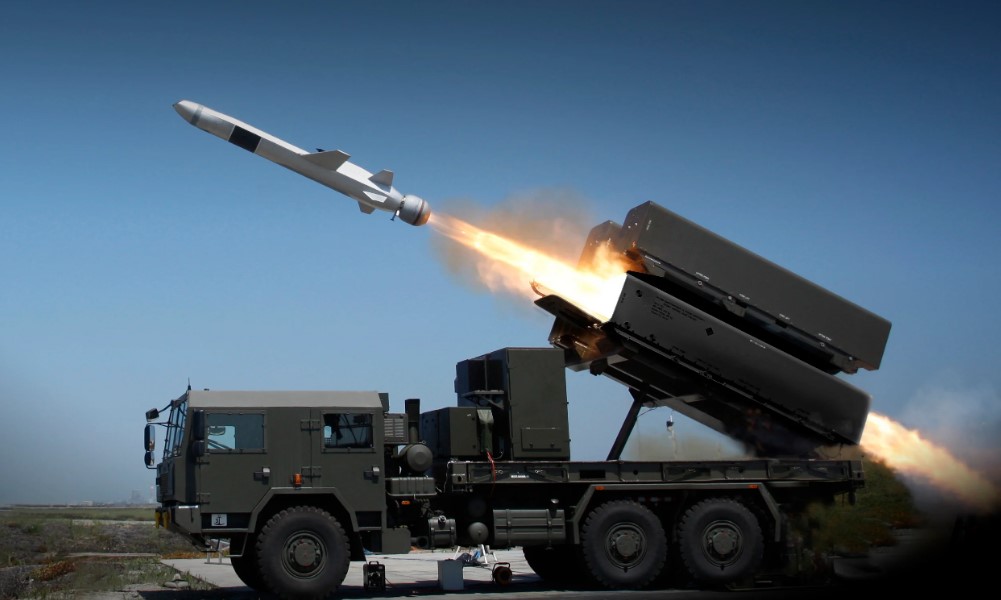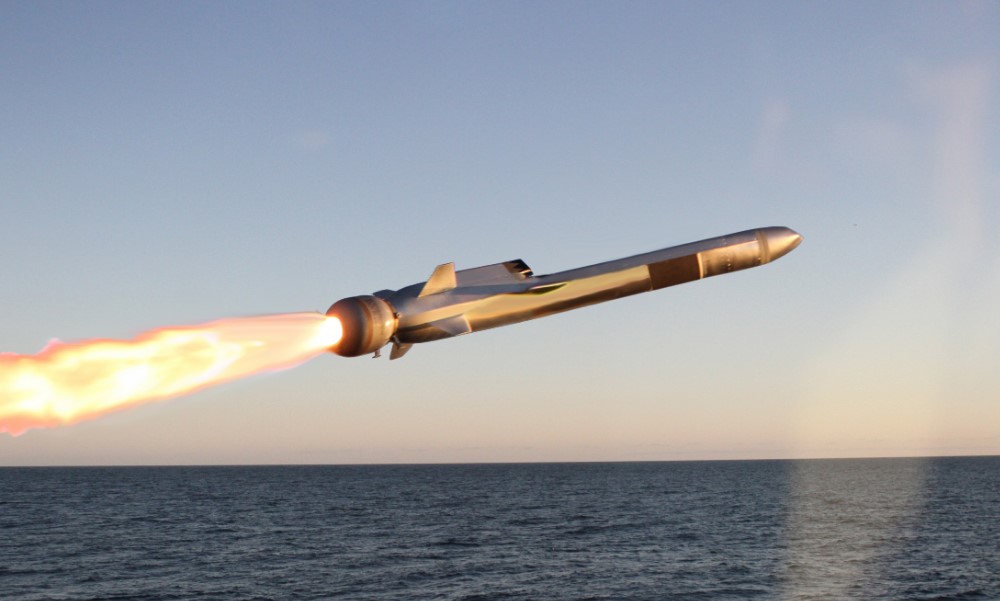The field of naval defense has advanced significantly over the past few decades, and at the forefront of this evolution are anti-ship missile batteries. These missile systems are essential in modern naval warfare, serving as a primary means of neutralizing maritime threats from hostile ships. With the ability to engage targets from long distances and high precision, these systems have become a cornerstone in the defense strategies of many nations.
What Are Anti-Ship Missile Batteries?

Key Features of Anti-Ship Missile Batteries

Anti-ship missile batteries are an integral part of modern naval warfare, offering unparalleled capabilities in defending maritime territories from enemy vessels. These sophisticated systems are designed to detect, track, and engage enemy ships with precision, speed, and force. Below are the key features that make these missile batteries essential in both defensive and offensive naval operations:
1. Precision Guidance Systems
One of the most critical features of anti-ship missile batteries is their advanced guidance systems. These systems ensure that the missile accurately tracks and hits its target, even in complex maritime environments.
- Radar Guidance: Most missiles are equipped with active radar seekers, which allow them to detect and lock onto enemy ships in various weather conditions.
- GPS and Inertial Navigation: Some systems, like the Harpoon Block II, use GPS-assisted inertial navigation to improve targeting accuracy, particularly in long-range engagements.
- Infrared Homing: For enhanced accuracy in final stages of the missile’s flight, infrared homing sensors are used to detect the heat signature of a ship, ensuring precise strikes even if radar systems are jammed or countermeasures are deployed.
These precision guidance technologies make anti-ship missiles highly reliable, allowing for minimal collateral damage and increased hit probability.
2. Long-Range Capabilities
Anti-ship missile batteries are designed to engage enemy vessels from long distances, allowing naval forces to neutralize threats before they come within striking range. Long-range capabilities are crucial in modern naval warfare, where engagements can span hundreds of kilometers.
- RBS-15 Mk4: Capable of engaging targets at ranges up to 300 kilometers, this missile is an example of a system designed for beyond-the-horizon combat.
- BrahMos: With a range of 290 kilometers and a supersonic speed of Mach 2.8, this missile system offers long-range precision combined with high-speed delivery.
The ability to engage targets from a distance provides significant tactical advantages, allowing naval forces to maintain a safe distance while still posing a lethal threat to enemy ships.
3. High-Speed Delivery
Speed is a crucial factor in missile engagements. High-speed missiles can quickly reach their targets, minimizing the enemy’s time to react or deploy countermeasures. Anti-ship missiles are generally categorized into two speed types:
- Subsonic Missiles: These travel at speeds below the speed of sound (Mach 1) and are often designed with stealth and evasion capabilities. For example, the Naval Strike Missile (NSM) travels at high subsonic speeds but features advanced radar-evading technologies.
- Supersonic Missiles: Systems like the BrahMos offer speeds far above the sound barrier, reaching Mach 2.8. Supersonic missiles are harder to intercept due to their speed, making them ideal for targeting high-value enemy ships.
Both subsonic and supersonic missiles serve different tactical needs, with subsonic missiles focusing on stealth and radar evasion, while supersonic missiles emphasize speed and overwhelming force.
4. Versatile Deployment Platforms
Anti-ship missile batteries are designed to be deployed from a wide range of platforms, making them highly versatile in various combat scenarios. These platforms include:
- Ship-Based Launchers: Most anti-ship missile systems are installed on naval warships, allowing them to strike enemy vessels from a distance. For example, the Harpoon Block II can be launched from destroyers, frigates, and corvettes.
- Submarine-Based Launchers: Submarine-launched missiles offer the element of surprise, as submarines can remain undetected beneath the water’s surface while delivering lethal strikes. The Exocet MM40 Block 3 can be launched from submarines.
- Land-Based Coastal Batteries: Some systems, like the RBS-15 Mk4, can be deployed on trucks or fixed coastal defense systems, offering flexibility in coastal defense.
- Air-Launched Missiles: Certain missiles can be launched from aircraft, providing naval and air forces with the ability to engage enemy ships from the air. The BrahMos can be launched from fighter jets, expanding its range of tactical applications.
This versatility ensures that anti-ship missile batteries can be integrated into various military strategies, depending on the operational needs and the specific theater of combat.
5. Multiple Target Engagement
Modern anti-ship missile batteries are designed to engage multiple targets simultaneously. This feature is crucial in large-scale naval conflicts, where multiple enemy ships may be approaching at once.
- Autonomous Targeting: Systems like the RBS-15 Mk4 and the Naval Strike Missile (NSM) are equipped with autonomous targeting capabilities, allowing them to independently engage and destroy multiple vessels.
- Simultaneous Launch Capability: Anti-ship missile batteries are often designed to launch multiple missiles at once, saturating the enemy’s defense systems and increasing the chances of successful hits.
This ability to engage multiple targets enhances a navy’s capacity to protect itself against coordinated enemy attacks.
6. All-Weather and Stealth Capabilities
Modern anti-ship missile batteries are built to operate effectively in all weather conditions. Whether it’s rain, fog, or rough seas, these systems are engineered to perform optimally, ensuring that threats can be neutralized regardless of environmental factors.
- All-Weather Operation: The Harpoon Block II is equipped with systems that allow it to engage targets in adverse weather conditions, ensuring its reliability in combat.
- Stealth Technology: Some missiles, like the Naval Strike Missile (NSM), are designed with low radar cross-sections and sea-skimming capabilities, making them difficult to detect and intercept.
Detailed Benefits of Anti-Ship Missile Batteries

The use of anti-ship missile batteries is critical for both offensive and defensive naval operations. Here are the primary benefits:
- Enhanced Maritime Security: These missile systems act as a deterrent, helping countries maintain control over their maritime borders. The mere presence of a well-equipped missile defense system can prevent potential adversaries from attempting to invade or attack.
- Strategic Flexibility: Anti-ship missile batteries are versatile and can be deployed on various platforms, allowing nations to choose the most appropriate defense mechanism for a given situation, be it coastal defense, shipborne defense, or aerial operations.
- Cost-Effective Defense Solution: Compared to traditional naval combat methods, such as deploying a full fleet of warships, anti-ship missile batteries are a cost-effective solution for neutralizing large threats with minimal resources.
- Rapid Response Capabilities: The speed and accuracy of these systems enable them to quickly engage and destroy enemy vessels before they come within striking distance of vital assets.
Top Anti-Ship Missile Battery Products in 2024
To provide a more comprehensive understanding, let’s delve into the leading anti-ship missile batteries available today. These products represent the pinnacle of modern defense technology and are widely adopted by naval forces worldwide.
1. Harpoon Block II
Manufacturer: Boeing
The Harpoon Block II is an established and widely-used anti-ship missile system. It features GPS-assisted inertial navigation and is designed for precise targeting of surface vessels. This missile can be deployed from various platforms, including ships, submarines, and aircraft, making it a highly versatile choice.
- Range: 125 kilometers
- Speed: High subsonic
- Platform Flexibility: Ships, submarines, aircraft, and coastal batteries
- Notable Features: GPS guidance, all-weather capabilities, low radar signature
- Price: Approximately $1.2 million per missile
2. RBS-15 Mk4
Manufacturer: Saab
The RBS-15 Mk4 is a long-range, all-weather anti-ship missile system designed to operate in harsh maritime environments. This missile is highly effective at neutralizing naval threats beyond the horizon and is equipped with advanced guidance systems for autonomous targeting.
- Range: 300 kilometers
- Speed: High subsonic
- Platform Flexibility: Ships, trucks, and coastal batteries
- Notable Features: Sea-skimming capability, high-penetration warhead, autonomous targeting
- Price: Approximately $2 million per missile
3. Exocet MM40 Block 3
Manufacturer: MBDA
The Exocet MM40 Block 3 is another highly effective anti-ship missile system, with a reputation for precision and reliability. This missile has an extended range and is capable of engaging both naval and land-based targets, making it highly versatile.
- Range: 200 kilometers
- Speed: Mach 0.9
- Platform Flexibility: Ships, submarines, coastal batteries
- Notable Features: Autonomous guidance, adaptable to multiple platforms, low radar signature
- Price: Approximately $1.5 million per missile
4. Naval Strike Missile (NSM)
Manufacturer: Kongsberg
The Naval Strike Missile (NSM) is renowned for its stealth capabilities and advanced radar evasion techniques. This missile is ideal for modern naval warfare, where radar detection plays a key role. It is designed to penetrate even the most sophisticated defense systems.
- Range: 185 kilometers
- Speed: High subsonic
- Platform Flexibility: Ships and land-based launchers
- Notable Features: Sea-skimming, stealth design, advanced autonomous targeting
- Price: Approximately $1.7 million per missile
5. BrahMos
Manufacturer: BrahMos Aerospace
The BrahMos missile is a supersonic cruise missile developed in collaboration between India and Russia. It is one of the fastest anti-ship missiles in existence, capable of hitting targets with extreme precision at supersonic speeds. Its versatility allows it to be launched from multiple platforms, including ships, aircraft, and submarines.
- Range: 290 kilometers
- Speed: Mach 2.8
- Platform Flexibility: Ships, submarines, aircraft, land-based launchers
- Notable Features: Supersonic speed, multi-platform adaptability, high precision
- Price: Approximately $3 million per missile
Comparison Table of Anti-Ship Missile Batteries
| Product | Range | Speed | Platforms | Advantages | Disadvantages | Price |
|---|---|---|---|---|---|---|
| Harpoon Block II | 125 km | Subsonic | Ships, submarines, aircraft | GPS-assisted guidance, low radar signature, versatile | Lower range than newer models | $1.2 million |
| RBS-15 Mk4 | 300 km | Subsonic | Ships, trucks, coastal | Long-range capabilities, autonomous targeting, all-weather | Higher price point, slightly slower speed | $2 million |
| Exocet MM40 Block 3 | 200 km | Mach 0.9 | Ships, submarines, coastal | Precision targeting, multi-platform adaptability | Mid-range speed | $1.5 million |
| Naval Strike Missile (NSM) | 185 km | Subsonic | Ships, land-based launchers | Stealth capabilities, advanced radar evasion, versatile | Not supersonic | $1.7 million |
| BrahMos | 290 km | Mach 2.8 | Ships, submarines, aircraft | Supersonic speed, extreme precision, multi-platform | Higher cost, complexity in deployment | $3 million |
Use Cases: Why Are Anti-Ship Missile Batteries Essential?
In the context of modern warfare, anti-ship missile batteries serve a critical role in a variety of scenarios:
- Maritime Border Defense: For nations with vast coastlines, anti-ship missile batteries provide a reliable defense mechanism to protect against naval incursions. These systems allow for the interception of hostile ships before they reach critical infrastructures or pose a direct threat.
- Naval Fleet Protection: Aircraft carriers, destroyers, and other high-value naval assets are vulnerable to enemy attacks. Anti-ship missile batteries provide the necessary protection to defend these assets, ensuring that fleet operations can continue without the constant threat of enemy vessels.
- Strategic Deterrence: The presence of an effective anti-ship missile defense system acts as a deterrent, preventing potential adversaries from launching naval attacks or incursions. By positioning these systems at strategic locations, nations can effectively safeguard their maritime interests.
How and Where to Buy Anti-Ship Missile Batteries
Purchasing anti-ship missile batteries involves navigating complex regulatory frameworks, as these are military-grade systems governed by strict international arms trade laws. Below is a general guide on how to proceed:
- Contact Manufacturers: Reach out to the official suppliers listed for each product (links provided in the product section above).
- Request Pricing and Proposals: Most manufacturers provide detailed proposals that outline the cost, system specifications, and delivery timelines based on your defense requirements.
- Government Approval: In most countries, the purchase of defense systems like anti-ship missile batteries requires approval from defense ministries or relevant governmental bodies.
- Compliance with International Laws: Ensure your country complies with international regulations, such as the Arms Trade Treaty (ATT), before proceeding with a purchase.
Where to Buy:
You can initiate the purchase process by visiting the official websites of leading manufacturers such as:
- Boeing
- Saab
- MBDA
(FAQs)
1. What are anti-ship missile batteries used for?
Anti-ship missile batteries are used to detect, track, and neutralize enemy ships in maritime conflicts. They are a key element in naval defense strategies.
2. How far can modern anti-ship missiles travel?
Modern anti-ship missiles can engage targets at ranges exceeding 200 kilometers, depending on the model and platform.
3. Can individuals purchase anti-ship missile batteries?
No, these systems are military-grade and can only be purchased by government entities or authorized defense contractors.
4. How do anti-ship missile batteries work?
Anti-ship missile batteries utilize radar, GPS, or other targeting systems to guide missiles toward enemy vessels, striking them with precision.
5. How much do anti-ship missile batteries cost?
Prices vary significantly depending on the model and configuration, but they generally range from $1.2 million to $3 million per missile.